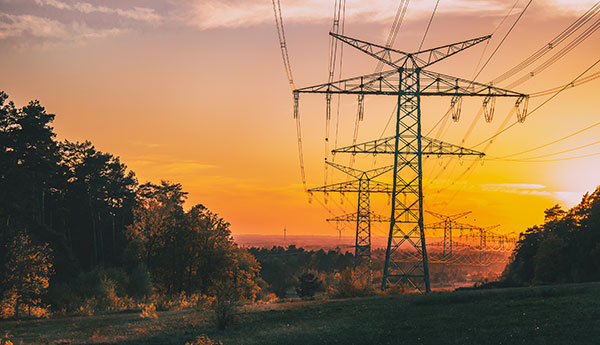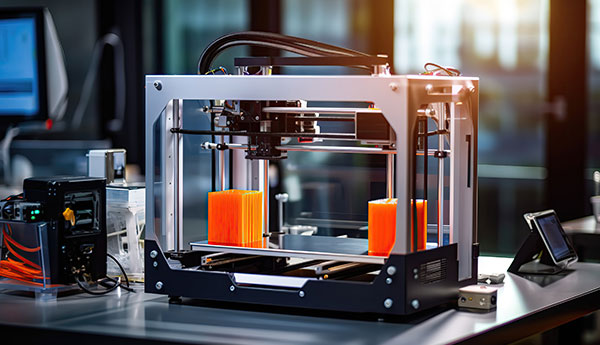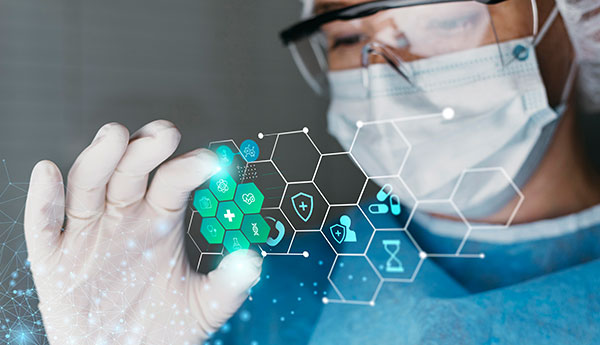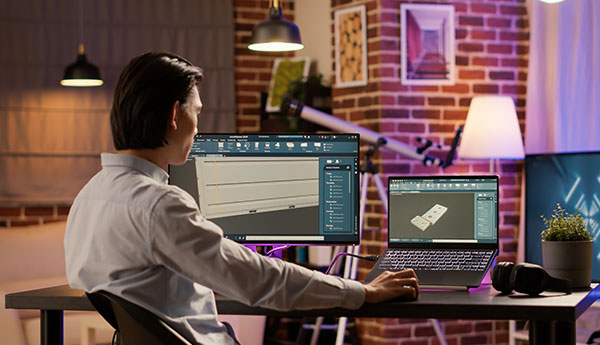
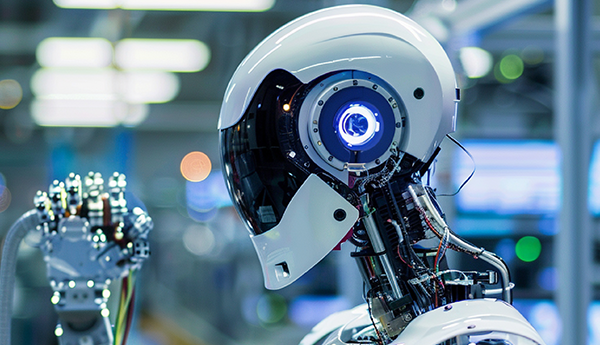
Robotics and Automation
Robotics and automation are transformative technologies reshaping industries and daily life by improving efficiency, productivity, and precision. They involve the design, construction, operation, and use of robots and automated systems to perform tasks traditionally carried out by humans or that are beyond human capabilities.
Key Concepts in Robotics
Definition of a Robot
A robot is a programmable machine capable of carrying out a complex series of actions automatically. Robots can be autonomous, semi-autonomous, or manually operated, and they are designed to perform specific tasks across various environments.
Components of a Robot
- Sensors:Detect environmental conditions and internal states to provide data for decision-making.
- Examples:Cameras, ultrasonic sensors, LIDAR, accelerometers, and gyroscopes.
- Actuators:Convert electrical signals into physical movement.
- Examples:Motors, servos, and hydraulic or pneumatic systems.
- Control System:The brain of the robot, which processes input from sensors and sends commands to actuators.
- Types:Centralized or distributed control systems, often powered by microcontrollers or computers.
- Power Supply:Provides energy to the robot’s components.
- Examples:Batteries, solar panels, or wired power sources.
- End Effectors:Tools or devices attached to the robot to interact with the environment.
- Examples:Grippers, welders, or surgical instruments.
Types of Robots
- Industrial Robots:
- Application:Used in manufacturing for tasks like welding, painting, assembly, and material handling.
- Designs:Articulated arms, SCARA, delta robots, and cartesian robots.
- Service Robots:
- Application:Perform services for humans, such as cleaning, delivery, or healthcare assistance.
- Examples:Robotic vacuums, autonomous delivery robots, and robotic exoskeletons.
- Humanoid Robots:
- Application:Designed to mimic human form and behavior for interaction and assistance.
- Examples:ASIMO, Sophia, and Pepper.
- Mobile Robots:
- Application:Move through various environments for tasks like exploration, surveillance, and mapping.
- Examples:Drones, autonomous vehicles, and robotic rovers.
- Collaborative Robots (Cobots):
- Application:Designed to work safely alongside humans in shared environments.
- Examples:Baxter, UR3, and LBR iiwa.

Key Concepts in Automation
Definition of Automation
Automation involves the use of technology to perform tasks with minimal human intervention. It encompasses a wide range of systems and processes that operate autonomously or semi-autonomously.
Levels of Automation
- Fixed Automation:
- Characteristics:High-volume production with dedicated equipment for specific tasks.
- Example:Automated assembly lines in automotive manufacturing.
- Programmable Automation:
- Characteristics:Equipment can be reprogrammed for different tasks or products.
- Example:CNC machines and robotic arms in factories.
- Flexible Automation:
- Characteristics:Highly adaptable systems that can switch tasks quickly with minimal downtime.
- Example:Flexible manufacturing systems and automated warehouses.
Applications of Automation
- Manufacturing:
- Tasks:Assembly, welding, painting, and quality control.
- Benefits:Increased production speed, consistency, and safety.
- Logistics and Supply Chain:
- Tasks:Sorting, packing, and transportation.
- Technologies:Automated guided vehicles (AGVs) and conveyor systems.
- Healthcare:
- Tasks:Surgery, diagnostics, and patient monitoring.
- Technologies:Robotic-assisted surgery, automated lab testing, and telemedicine.
- Agriculture:
- Tasks:Planting, harvesting, and monitoring crops.
- Technologies:Autonomous tractors, drones, and precision farming systems.
- Retail:
- Tasks:Inventory management, checkout, and customer service.
- Technologies:Automated kiosks, self-checkout systems, and inventory robots.

Key Concepts in Automation
Definition of Automation
Automation involves the use of technology to perform tasks with minimal human intervention. It encompasses a wide range of systems and processes that operate autonomously or semi-autonomously.
Levels of Automation
- Fixed Automation:
- Characteristics:High-volume production with dedicated equipment for specific tasks.
- Example:Automated assembly lines in automotive manufacturing.
- Programmable Automation:
- Characteristics:Equipment can be reprogrammed for different tasks or products.
- Example:CNC machines and robotic arms in factories.
- Flexible Automation:
- Characteristics:Highly adaptable systems that can switch tasks quickly with minimal downtime.
- Example:Flexible manufacturing systems and automated warehouses.
Applications of Automation
- Manufacturing:
- Tasks:Assembly, welding, painting, and quality control.
- Benefits:Increased production speed, consistency, and safety.
- Logistics and Supply Chain:
- Tasks:Sorting, packing, and transportation.
- Technologies:Automated guided vehicles (AGVs) and conveyor systems.
- Healthcare:
- Tasks:Surgery, diagnostics, and patient monitoring.
- Technologies:Robotic-assisted surgery, automated lab testing, and telemedicine.
- Agriculture:
- Tasks:Planting, harvesting, and monitoring crops.
- Technologies:Autonomous tractors, drones, and precision farming systems.
- Retail:
- Tasks:Inventory management, checkout, and customer service.
- Technologies:Automated kiosks, self-checkout systems, and inventory robots.

Benefits of Robotics and Automation
- Increased Efficiency:Robots and automated systems can work continuously without breaks, significantly increasing productivity.
- Enhanced Precision:Automation reduces human error, ensuring consistent quality and accuracy in tasks.
- Cost Savings:Long-term savings through reduced labor costs, decreased waste, and improved energy efficiency.
- Safety Improvements:Robots can perform dangerous tasks, reducing the risk of injury to human workers.
- Scalability:Automation enables rapid scaling of operations to meet changing demands.
Challenges and Considerations
- High Initial Costs:The investment required for robotic systems and automation infrastructure can be significant.
- Job Displacement:Automation may lead to job loss in some sectors, necessitating workforce retraining and upskilling.
- Technical Complexity:Designing, implementing, and maintaining automated systems require specialized expertise.
- Ethical and Social Implications:The widespread adoption of robots raises questions about privacy, security, and the ethical use of technology.
- Dependence on Technology:Over-reliance on automation can lead to vulnerabilities in case of system failures or cyberattacks.
Future Trends in Robotics and Automation
- AI and Machine Learning Integration:Enhanced decision-making and autonomy in robotic systems through AI-driven algorithms.
- Collaborative Robotics:Increased use of cobots in various industries for tasks requiring human-robot interaction.
- Autonomous Vehicles:Continued development and deployment of self-driving cars, drones, and other autonomous transport systems.
- Smart Factories:Implementation of Industry 4.0 principles, integrating IoT, data analytics, and automation for more efficient production.
- Robotics in Healthcare:Expansion of robotic applications in surgery, rehabilitation, and elder care to improve patient outcomes.


